 A library collection hosted by CPIR
A library collection hosted by CPIR
Developed by NAPTAC | Native American Parent
Technical Assistance Center
Resources updated in October 2024 developed by LDAH | Leadership in Disabilities and Achievement of Hawaii
Tier 1 materials emphasize the foundations of Native culture. These are critical first layers of awareness and knowledge for Parent Centers to have in order to deliver culturally appropriate services to Native families whose children or youth have disabilities. Key information in this tier includes:
- Historical trauma, from its impact across generations to what Parent Centers need to recognize, understand, and keep in mind when working with Native American families, including American Indians, Alaska Natives and Native Hawaiians;
- The values that differ from culture to culture and that affect all social interaction with indigenous families;
- The reality of tribal sovereignty, both historically and as a continuing element of American Indian/Alaska Native (AI/AN) identity;
- Education, from policies that forcibly removed AI/AN and Native Hawaiian children and youth from their families to current practices still aimed at assimilation of all Native Americans resulting in a disproportionate number of Native youth in special education and causing distrust of education providers;
- Terminology, including terms and acronyms used commonly within Native communities, but likely unfamiliar to Parent Center personnel.
The materials listed below introduce these fundamental truths about Native peoples. Use them as part of in-staff training and individual or personal capacity building. May they enrich and inform your Parent Center’s outreach and service provision to these remarkable yet underserved communities!
Webinar | Historical Perspectives for Working with Native American Parents
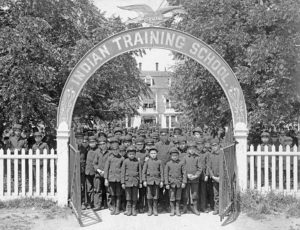
Indian children were sent to boarding schools for education. This one was in Chemawa, Oregon.
The first step in developing an understanding of Native American culture and peoples is learning about historical trauma and its monumental impact on generations of Native people, their culture, and health. This 55-minute webinar led by Robin Butterfield is tailored expressly for Parent Centers to:
- provide an historical comparison of pre-contact Native education with the institutionalization of Native students in boarding schools funded by the U.S. federal government;
- share the findings of 20th century reports that documented the state of Native education, leading to changes in federal policy; and
- suggest strategies that Parent Centers can use to partner with schools and improve Native parental involvement in the education of their children.
Below, please find the PowerPoint presentation used in the webinar (which includes speaker notes), a PDF of the same, and the handouts to conduct the Indian Bingo activity described by Robin. 2016.
2016 PowerPoint Presentation and Accompanying Handouts (Heads-up! There’s a 2020 version of this game in Tier 4, see below.)
PowerPoint slideshow | PDF of the slideshow
Participant Bingo Card in Word | Bingo Card in PDF
Indian Bingo Answers in Word | The Answers in PDF
Watch the video of the webinar Online at: https://youtu.be/3kVHwzFEa2k
2020 revision | Be aware that CPIR has updated the questions and answers in the 2016 Bingo game to include items on Native Hawaiians, adding on to and re-arranging the items on American Indians and Alaska Natives. Check out the 2020 game instructions, participants cards, and answer sheets in Tier 4, along with their renderings in Spanish.
Back to top
________________
What do Parent Centers Need to Know: Historical Perspectives for Working with Native American Parents
This brief describes some of the historical factors impacting the participation of Native parents in the schooling of their children. These factors include the institutionalization of American Indian and Alaska Native children in boarding schools, where goals focused more on assimilation than education. Only since the 1970s did changes occur to improve education for all Native American students, at least 75% of whom now attend public schools. [3-page brief, available in Word and PDF, 2016]
Historical Perspectives for Working with Native American Parents | in Word
Historical Perspectives for Working with Native American Parents | in PDF
_____________________
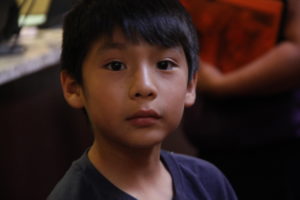 Historical Trauma: Developing an Understanding of American Indians and Alaska Natives
Historical Trauma: Developing an Understanding of American Indians and Alaska Natives
This brief examines what historical trauma is and describes its monumental impact on generations of Native people, their culture, and health. Parent Centers can use this information to deepen their understanding of Native communities and to inform outreach, service delivery, and training activities. [3-page brief in Word, 2-page brief in PDF, Revised edition, 2020]
Historical Trauma-2020 | in Word
Historical Trauma-2020 | in PDF format
_____________________
Historical Trauma of Native Hawaiians
This brief explores the historical trauma experienced by Native Hawaiians, which in many ways parallels that of American Indians and Alaska Natives. Of particular note is Native Hawaiians’ long history of sovereignty, monarchy, and independence, which changed abruptly and completely when Europeans and other traders and merchants arrived in the islands. The Hawaiian system of life and governance was overthrown, Native Hawaiians lost 90% of their land, and diseases introduced by those from afar decimated the Native population. Hawaii was then annexed by the United States. Parent Centers can deepen their understanding of Native Hawaiians, the historical trauma they experienced, and how they have held on to their unique culture and are working now to revitalize their Native language. [3-page brief in Word, in PDF, available in both English and Spanish; September 2020]
English versions: Historical Trauma of Native Hawaiians (in HTML, as a webpage) | in Word | in PDF
Spanish versions: Trauma Histórico de los Nativos Hawaianos (en HTML) | en Word | en PDF
_____________________
How Values Impact Communication with American Indians and Alaska Natives
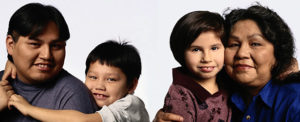
This brief explores the importance of cultural values in relationship building. As Parent Centers reach out to, and work with, American Indian and Alaska Native communities, they will find it helpful to know more about select Native values that can influence communication and social interaction. Several Native values and behaviors of note are described. [4-page brief, available in Word and PDF, 2017]
How Values Impact Communication with American Indians and Alaska Natives | in Word
How Values Impact Communication with American Indians and Alaska Natives | in PDF format
________________
Tribal Sovereignty and Treaty Making
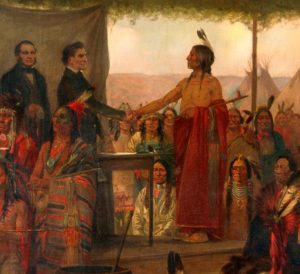
The signing of the Treaty of Traverse des Sioux, 1851
This brief explores what sovereignty is, how and why it applies to federally recognized tribes, what sovereignty continues to mean to Indian individuals and nations, and key points to remember, including how sovereignty distinguishes AI/ANs from other minority groups. [4-page brief in Word and in PDF , 2016]
Tribal Sovereignty and Treaty Making | in Word
Tribal Sovereignty and Treaty Making | in PDF
_____________________
Native Nations and American Schools: The History of Natives in the American Education System
 To better understand how the current Native education system was established, the National Indian Education Association (NIEA) produced the Native Nations and American Schools: The History of Natives in the American Education System in 2016. Better known as Native Education 101, the report shares information about the historical context and current status of Native education. This document can serve as a guide for educators in understanding their Native students and developing responsive education strategies.
To better understand how the current Native education system was established, the National Indian Education Association (NIEA) produced the Native Nations and American Schools: The History of Natives in the American Education System in 2016. Better known as Native Education 101, the report shares information about the historical context and current status of Native education. This document can serve as a guide for educators in understanding their Native students and developing responsive education strategies.
Product based on the Native Nations report | You’ll find an infographic that summarizes the findings of the information described in the report and places that information within a key historical truth that has greatly impacted how Native communities interact with schooling in the U.S.
Educating Native Students, Then and Now | Infographic, 2 pages, available in PDF only, 2024
_____________________
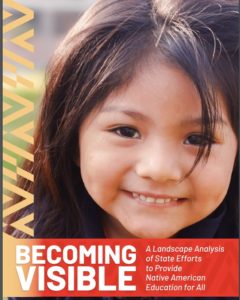 Becoming Visible: A Landscape Analysis of State Efforts to Provide Native American Education for All
Becoming Visible: A Landscape Analysis of State Efforts to Provide Native American Education for All
This report is a valuable resource on the current state of Indian education, published in 2019 by the National Congress of American Indians (NCAI). It’s also included in Tier 4 materials, with other resources for Parent Centers. The NCAI report is 52 pages long.
Focus of NCAI’s Analysis | The report analyzes the landscape of current state efforts to bring high-quality educational content about Ai/AN peoples and communities into all kindergarten to 12th grade (K-12) classrooms across the United States.
Download NCAI’s Analysis and Findings | https://archive.ncai.org/policy-research-center/research-data/prc-publications/NCAI-Becoming_Visible_Report-Digital_FINAL_10_2019.pdf
Which part of the Resource Collection would you like to visit now?
Return to the Native American Resource Collection’s landing page
Tier 1: Native Culture and Background (You’re here now.)
Tier 2: Outreach to Native Communities
Updated April 2024

